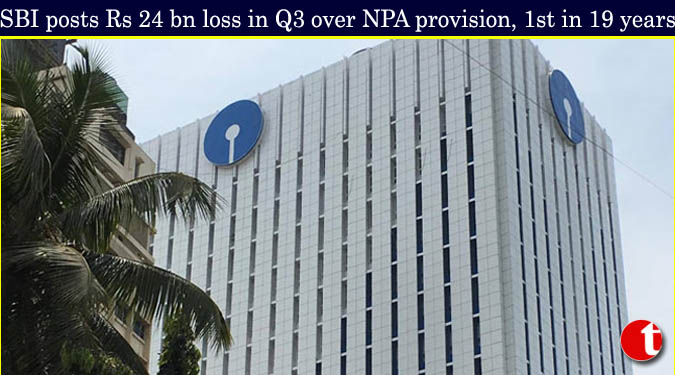TIL Desk/Business/Mumbai/ State Bank of India (SBI), the country’s largest bank, posted a quarterly loss for the first time in nearly 19 years — of Rs 24.16 billion in the December quarter of 2017-18 — owing to a sizeable increase in provisioning for bad loans. This came after the Reserve Bank of India (RBI) asked the lender to reclassify some corporate loans as non-performing assets (NPAs).
The net loss came as a surprise, given that the street was expecting the bank to post a net profit of Rs 19 billion, as predicted by a Bloomberg poll of analysts. The bank also provided for mark-to-market losses worth Rs 34 billion on its investment portfolio. The operating performance was also slightly lower than the expectations of analysts.
The last time SBI reported a quarterly loss was in January-March 1999. Terming it a disappointing quarter, SBI Chairman Rajnish Kumar said the bottom line was hit by lower trading income due to a hardening of bond yields, leading to a significant depreciation in the bank’s investment portfolio. The yield on 10-year government securities increased by 67 basis point from 6.66 per cent on September 29, 2017, to 7.33 per cent on December 29, 2017.



